The folds in a mitochondrion greatly increase the membrane’s surface area, and improves its ability to ____________________

Perform cellular respiration
Section 1-1
The sodium-potassium pump is considered to be a form of [active or passive] transport because the molecules flow from [High or Low] concentration to [High or Low] concentration.
The sodium-potassium pump is considered to be a form of ACTIVE transport because the molecules flow from LOW concentration to HIGH concentration.
Sec 2-6
Which body system is responsible for the movement of the body, as well as the movement of internal organs? Which body system provides structural support for it?
Muscular System
Skeletal System
Sec 3-1
Define producer
Define consumer
A producer is capable of using energy to make its own food
A consumer must eat other organisms to obtain energy
Sec 4-1
The Earth is 24,900 miles around (the circumference is 24,900 miles). Superman starts by the flagpole of DPHS North Campus and flies completely around the Earth 8 times. What is his displacement?
His displacement is 0 because he started and ended in the same place.
Sec 5-1
“Every action force creates a reaction force that is equal in strength and opposite in direction.” This statement summarizes which of Newton’s Laws?
Newton's Third Law of Motion
Sec 6-3
Give 3 examples of velocity.
Examples could include anything with a speed in a particular direction.
Sec 5-7
Name the characteristics of living things
Made of cells Come from pre-existing cells
Have DNA
Respond to their environment Reproduce
Use energy Grow
Remove waste
Sec 1-2
______________ is the process that allows large food particles to enter the cell
_______________ is the process that allows bulk liquids to enter the cell
Phagocytosis
Pinocytosis
Sec 2-4&5
Match the body system with its function
A. Circulatory B. Digestive C. Excretory D. Respiratory
1. This system controls water and salt balance and filters metabolic wastes from the blood
2. This system takes in oxygen and removes carbon dioxide from the body
3. This system transports nutrients, gases, wastes, hormones, and other materials to and from cells
4. This system physically and chemically breaks down food and absorbs nutrients for energy
1. C
2. D
3. A
4. B
Sec 3-3,4,5,6
Define the following terms using emojis
Mutualism
Commensalism
Parasitism
Mutualism — :) :)
Commensalism — :) :/
Parasitism — :) :(
Sec 4-6
You walk home from school 12 blocks east, then turn 12 blocks North, and then turn 12 blocks east to arrive at your house. What is your distance travelled? What is your displacement?
Distance traveled was 36 blocks
Displacement was 26.8 blocks north-east

Sec 5-2
Two balls are dropped from the top of a ladder. They are both the same size, but one is very light and the other is very heavy. In the absence of air resistance, which ball will hit the floor first?
They will land at the same time.
Sec 6-4
Calculate the momentum of a 0.5-kilogram softball moving at 60 m/s
p = mv
p = (0.5 kg) (60m/s)
p = 30 kgm/s
Similar to Sec 5-8 but with different numbers
The function of the Golgi apparatus is to ____________________
Package proteins into membrane-bound vesicles before being secreted from the cell
Sec 1-3
Describe each solution each of these cells are in using the words hypotonic, hypertonic, and isotonic


A Isotonic
B Hypotonic
C Hypertonic
Sec 2-7
What is the equation for photosynthesis?
What is the equation for cellular respiration?
Photosynthesis
CO2 + H2O + solar energy ------> C6H12O6 + O2
carbon dioxide + water + solar energy --> glucose + oxygen
Cellular Respiration
C6H12O6 + O2 -------------> CO2 + H2O + ATP
glucose + oxygen --> carbon dioxide + water + ATP
Sec 3-10
What is the main difference between primary and secondary succession?
Primary succession needs to go through weathering and erosion before it has soil. Secondary succession starts with soil already present.
Sec 4-7
If a car has traveled 60 m/s for 10 s, how far has it traveled?
v=d/t
d = vt
d = (60 m/s)(10 s)
d= 600 m
Similar to Sec 5-3 but with different numbers
A tow truck pulls a 500-kg car with a net force of 4,000 N. What is the acceleration of the car?
F = ma
a = F/m
a = 4,000 N / 500 kg
a = 8 m/s2
Similar to Sec 6-1 but with different numbers
Batman and Robin are traveling together in the Batmobile at 15 m/s. All of the sudden they spot an explosion in the distance. 5 seconds later, they are traveling at 70 m/s. What was Batman and Robins’ acceleration
a = vf - vi / t
a = (70 m/s - 15 m/s) / 5 s
a = (55 m/s) / 5 s
a = 11 m/s2
Sec 5-9
Which organelles are found in both prokaryotes and eukaryotes?
Cell membrane
Ribosomes
Cytoplasm
DNA
Sec 1-8
The following solute particles are moving through the cell membrane from high concentrations to low concentrations. They are also using a carrier protein.
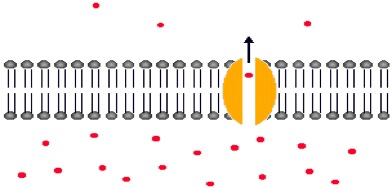
How would you describe this type of movement across the membrane?
Facilitated Diffusion
Sec 2-2
What is the function of the leaf?
To collect solar energy, to exchange gases with the environment, and to perform photosynthesis
Sec 3-9
What are pioneer species?
What pioneer species are present in primary succession?
What pioneer species are present in secondary succession?
Pioneer species are the first organisms found in succession.
Pioneer species in primary succession are mosses and lichens
Pioneer species in secondary succession are weeds and grasses
Sec 4-7
What is the displacement of the object from 0 to 3 s based on the Position vs. Time graph below?
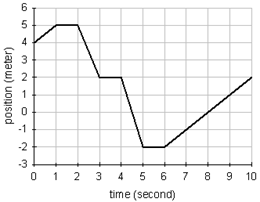
The displacement is 2 m.
Sec 5-3
At which of these positions does the ball have both the greatest potential energy and the least kinetic energy?
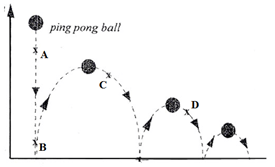
Point A
Sec 6-6,7
A giant boulder is coming right at the Green Lantern so he creates an energy shield to protect himself. The boulder moves 7 meters East and then bounces off the shield and moves 15 meters West. This all happens in 3 seconds, what is the velocity of the boulder?
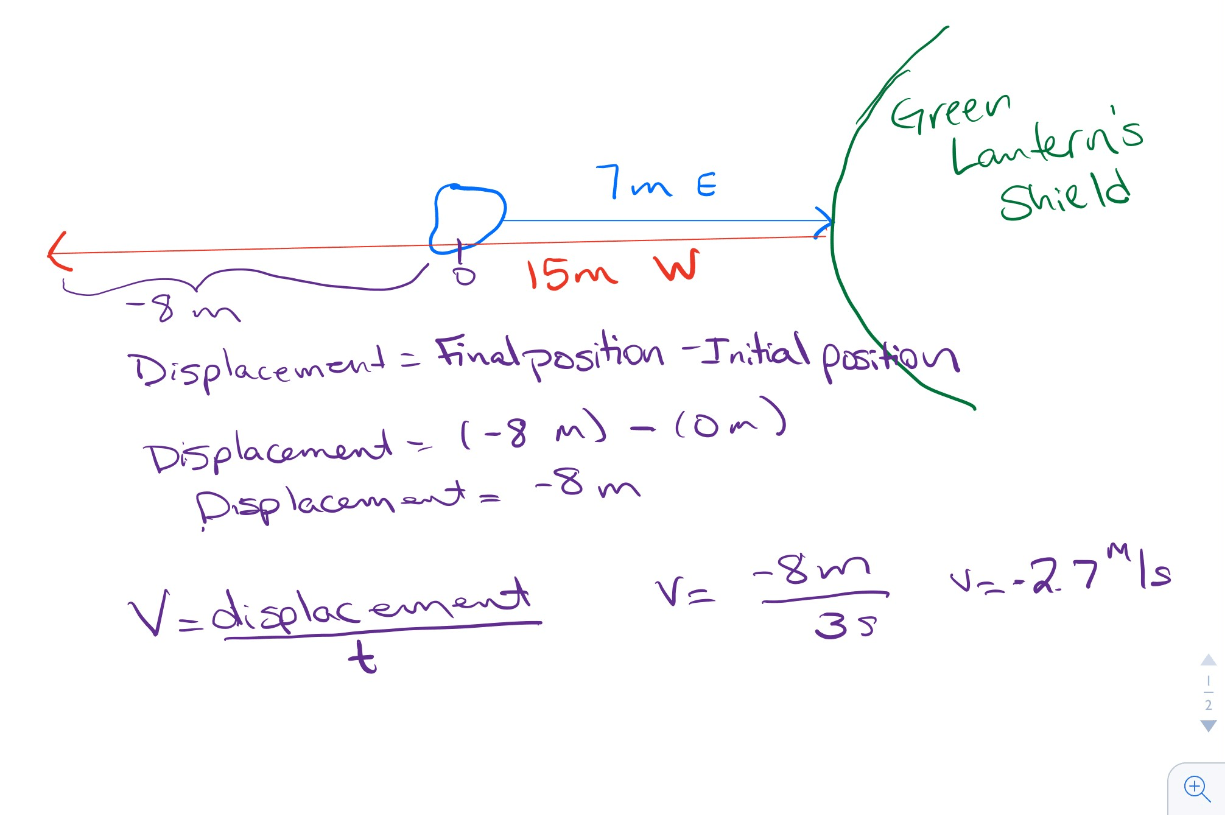
Sec 5-6
Draw the lytic cycle of a virus with the steps in order
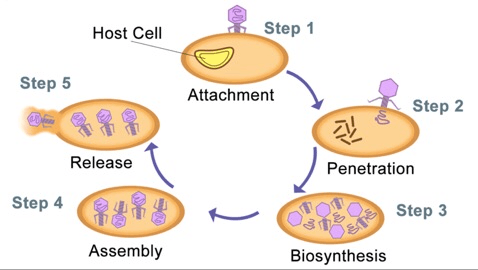
Sec 1-5
What is this organelle called? What is this mostly made of? What are the names of some of the parts of this?
This is called the phospholipid bilayer, the cell membrane or the plasma membrane. It is mostly made of phospholipid molecules. It includes carrier proteins and carbohydrates.
Sec 2-10
Name the purpose of each of the body systems shown:
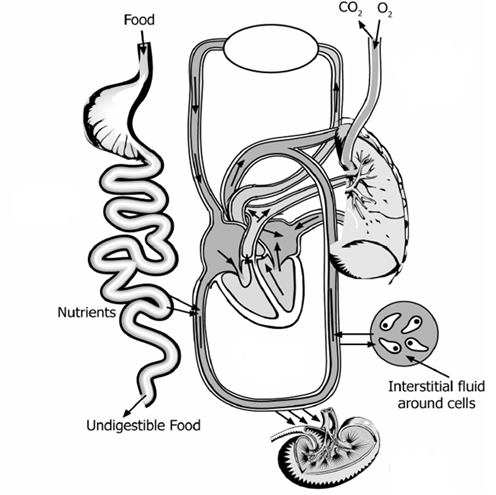
Digestive -- break down food physically and chemically and absorb nutrients for energy
Circulatory -- transport gases, hormones, wastes, and other materials to and from the cells
Respiratory -- take in oxygen and remove carbon dioxide from the body
Excretory -- control water and salt balance and filter metabolic waste from the body
Sec 3-3,4,5,6
How much energy would get transferred to a quaternary consumer if the producers have a total energy of 250,000 kJ?
primary -- 25,000 kJ
secondary -- 2,500 kJ
tertiary -- 250 kJ
quaternary -- 25 kJ
Similar to Sec 4-5, but different numbers
What is the acceleration of the object between 15 and 30 seconds based on the graph below?
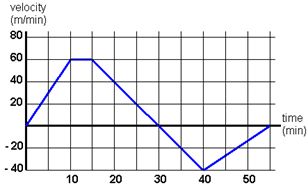
a = vf - vi / tf - ti
a = (0 m/min - 60 m/min) / (30 s - 15 s)
a = -60 m/min / 15 min
a = -4 m/min2
Similar to Sec 5-5 but with different numbers
A police car is chasing a suspect in a 500 [kg] stolen truck traveling at 12 [m/s]. What is the kinetic energy of the truck?
K.E. = 1/2 mv2
K.E. = (0.5) (500 kg) (12 m/s)2
K.E. = (0.5) (500 kg) (144 m2/s2)
K.E. = 36,000 J
Similar to Sec 6-7 but with different numbers
A 700 [kg] sailboat moves with a momentum of 250,000 [kg·m/s]. What is the velocity of the boat?
p = mv
v = p / m
v = 250,000 kg·m/s / 700 kg
v = 357.1 m/s
Sec 5-10